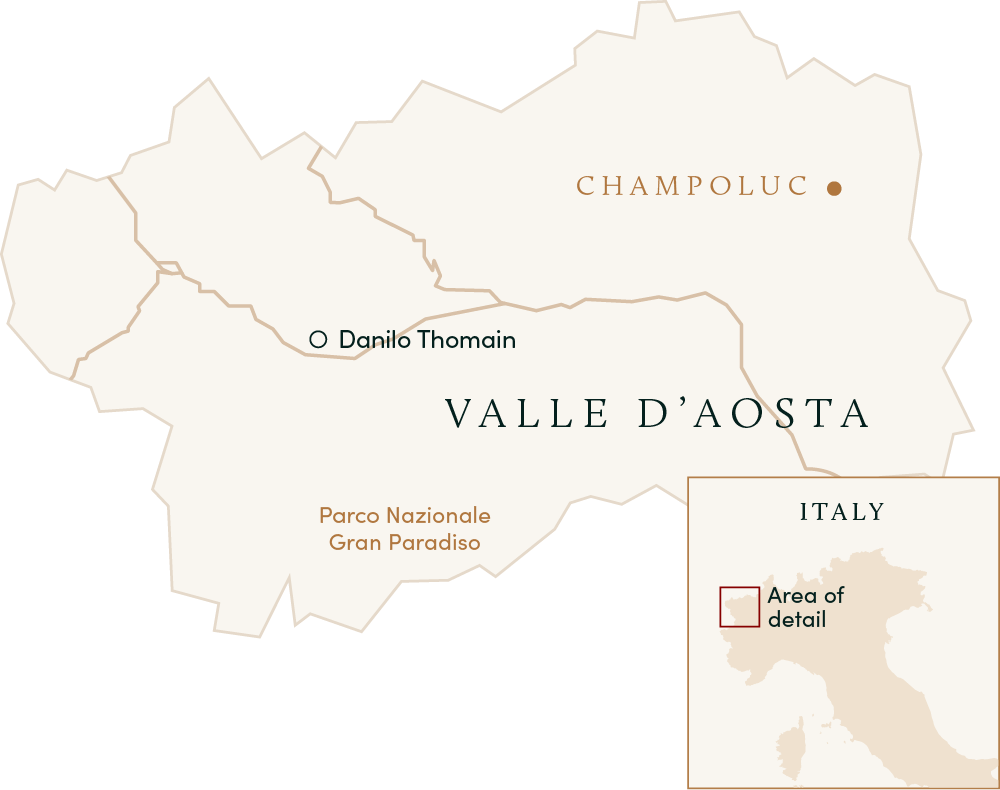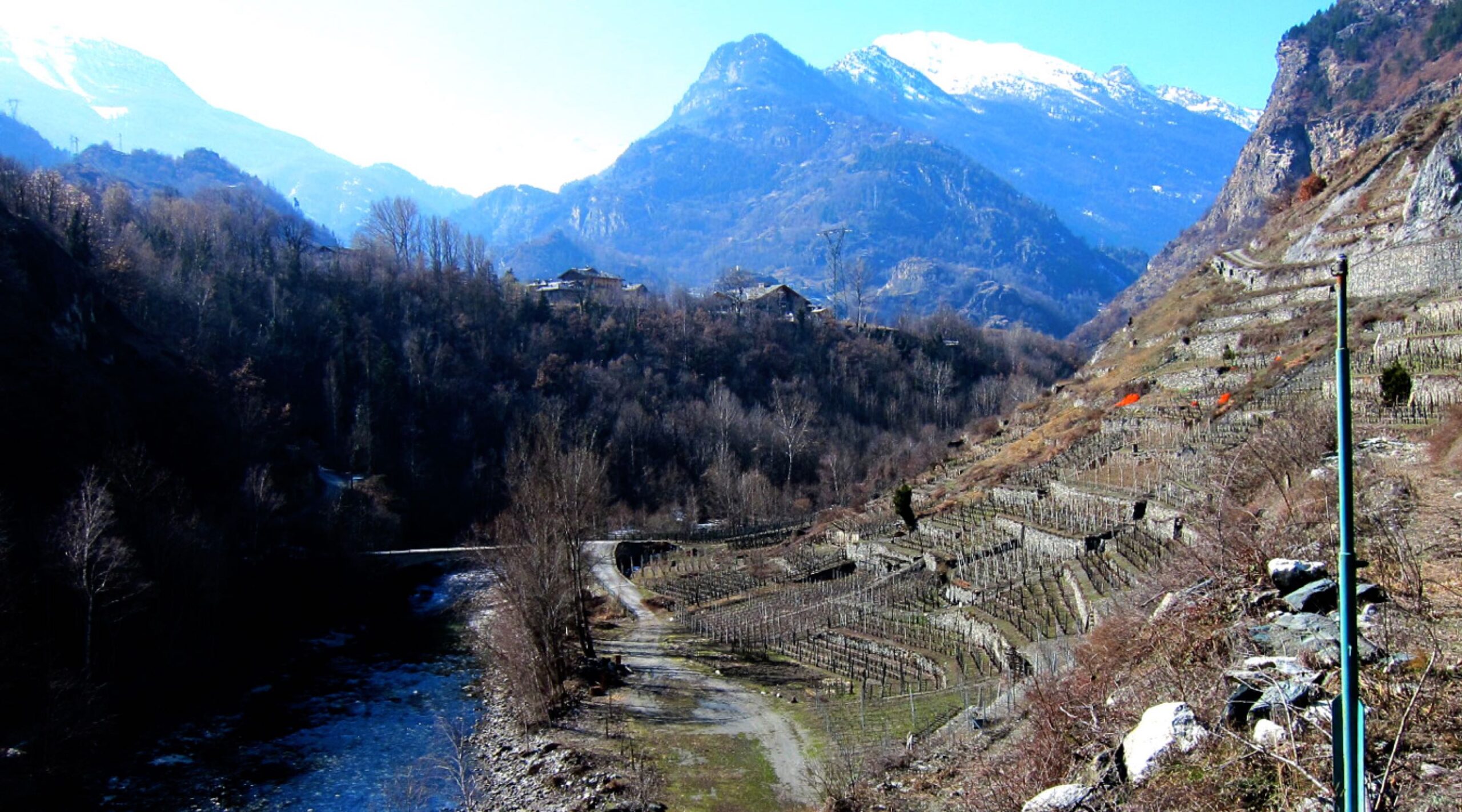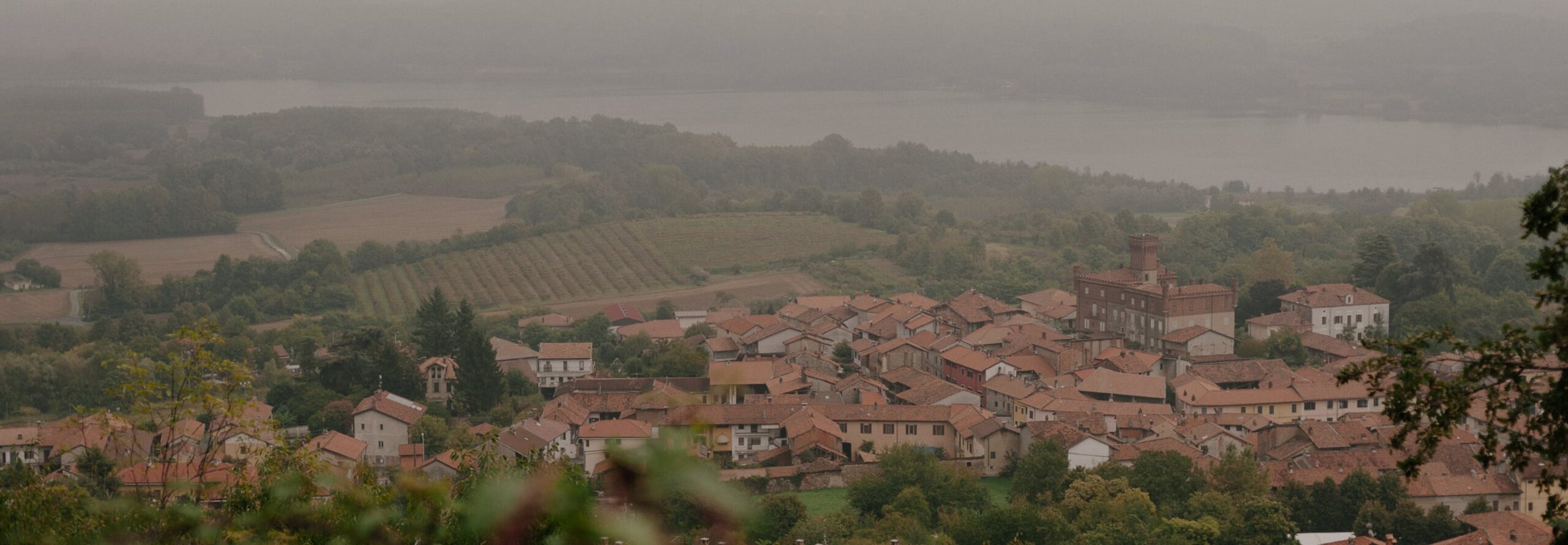Home of the second-highest winegrowing zone in the valley, the the Enfer d’Arvier is a splendorous amphitheater of steeply terraced vines overlooking the Dora Baltea/Doire Baltée river below. Covering a scant 5 ha, the majority of the Enfer d’Arvier’s output is via the local co-op, and with his single hectare in production, Danilo Thomain stands as the zone’s only independent bottler of wine. Amazingly, he is currently clearing and de-foresting another hectare’s worth of hillside above his current holdings in order to expand production, thereby reclaiming some of the long-unused but prime terrain whose viticultural records date back to the 13th century.
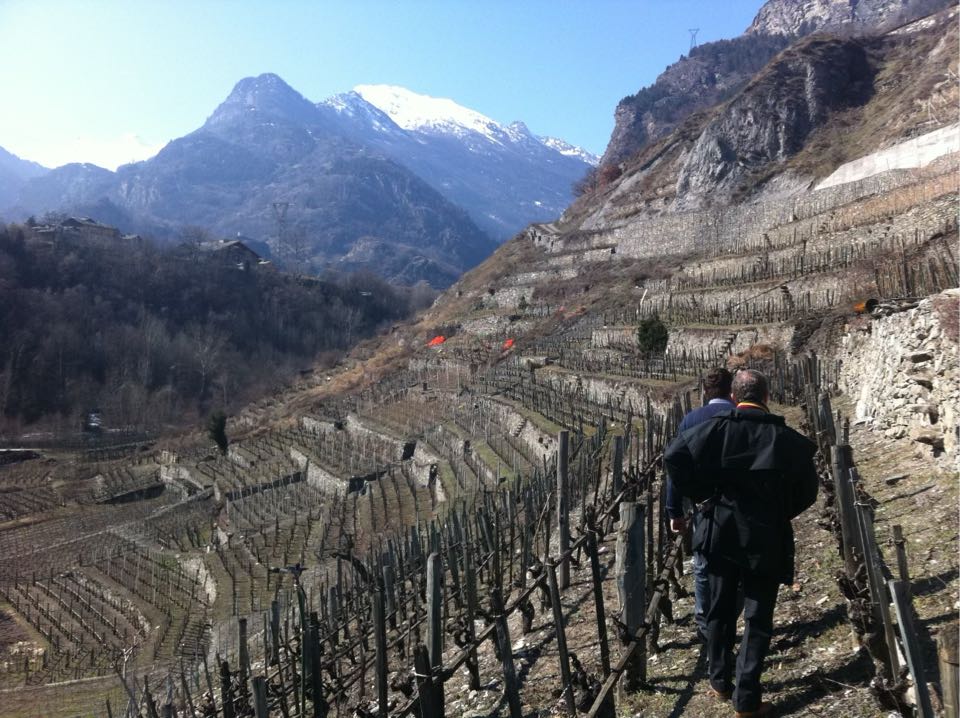
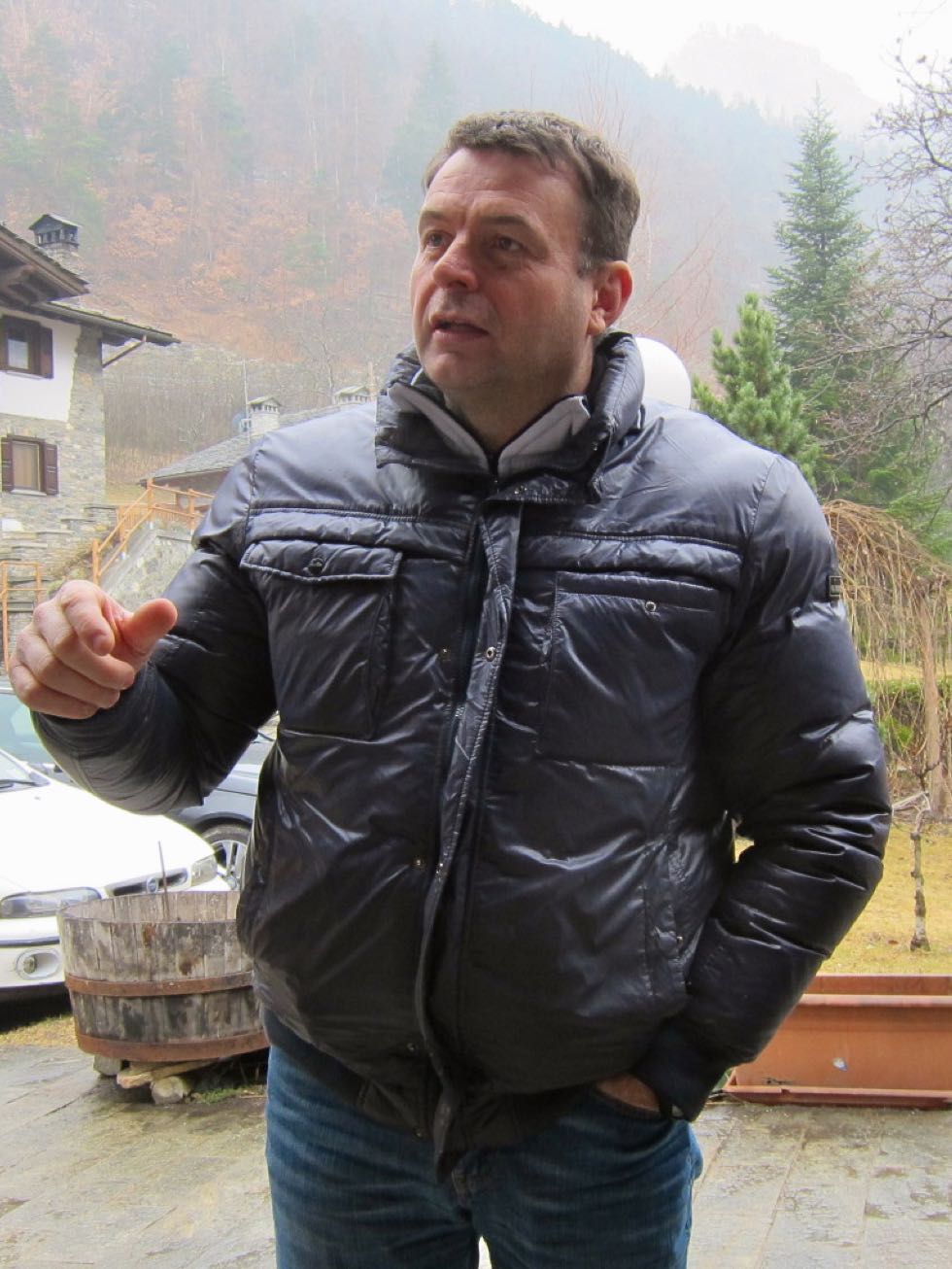
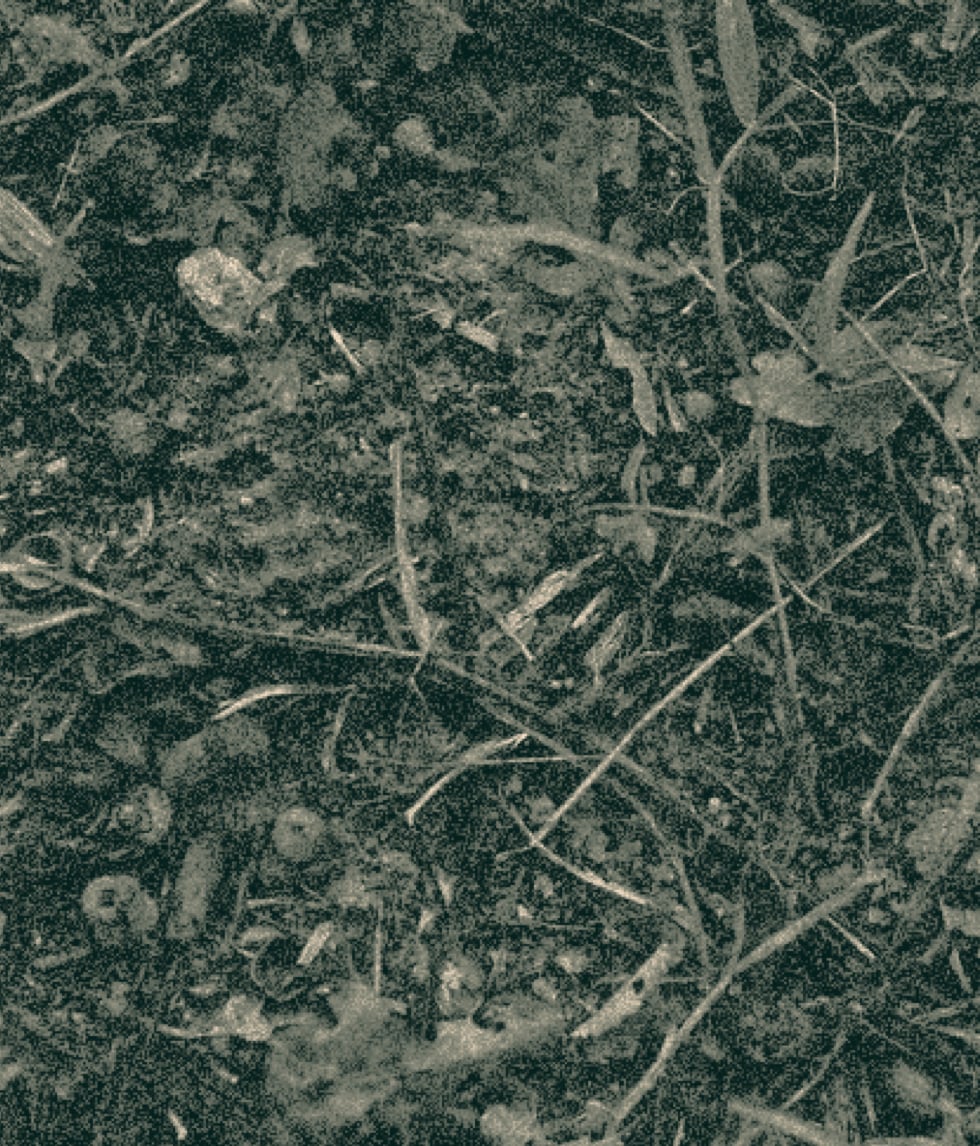
Covering a scant 5 ha, the majority of the Enfer d’Arvier’s output is via the local co-op, and with his single hectare in production, Danilo Thomain stands as the zone’s only independent bottler of wine.
The huge diurnal shifts between Enfer d’Arvier’s scorching days and chilly nights—“Enfer d’Arvier,” after all, means “The Hell of Arvier”— expresses itself in a palate tug-of-war between rapier-like acidity and thick, luscious fruit that vibrates with energy—and as a recently consumed 2008 attested, it can age beautifully. It seems like just the other day that, through a recommendation from his pal Ermes Pavese, we had yet another face of the Valle d’Aosta’s incomparable terroir revealed to us. These are the sorts of treasures we at Rosenthal live for—arresting wines made by fascinating people working in unique corners of the earth—and Thomain’s wines were an immediate success. Danilo produces only a few hundred cases of wine each vintage, and being able to purchase over half of it for the USA is a great privilege indeed.
Farming
Lutte Raisonnée
Treatments
Synthetic products allow for a dramatic reduction in vineyard treatments, with 5 rather than the 20 that would be necessary if using only copper-sulfate
Ploughing
Annual hoeing and working of the soil to maintain vineyard health
Soils
Sandy glacial moraines
Vines
Trained in Guyot and planted at 10,000 vines/ha, vines average 35-40 years old.
Yields
Controlled through severe winter pruning, debudding, and an occasional green harvest
Harvest
Entirely manual, usually in early October
PURCHASING
Entirely estate fruit
Fermentation
After total destemming, wine ferments spontaneously in fiberglass and stainless-steel tanks. Cuvaison lasts c. 2 weeks.
Extraction
Wines see pumpovers during cuvaison.
Chaptalization
None
Malolactic Fermentation
Spontaneous, in stainless-steel tanks following alcoholic fermentation
Élevage
Wine ages in stainless-steel tanks for c. 9 months
LEeS
Wines remain on their fine lees until assemblage prior to bottling.
FINING & FILTRATION
Wines are unfined and unfiltered.
SULFUR
Applied after malolactic and at bottling
